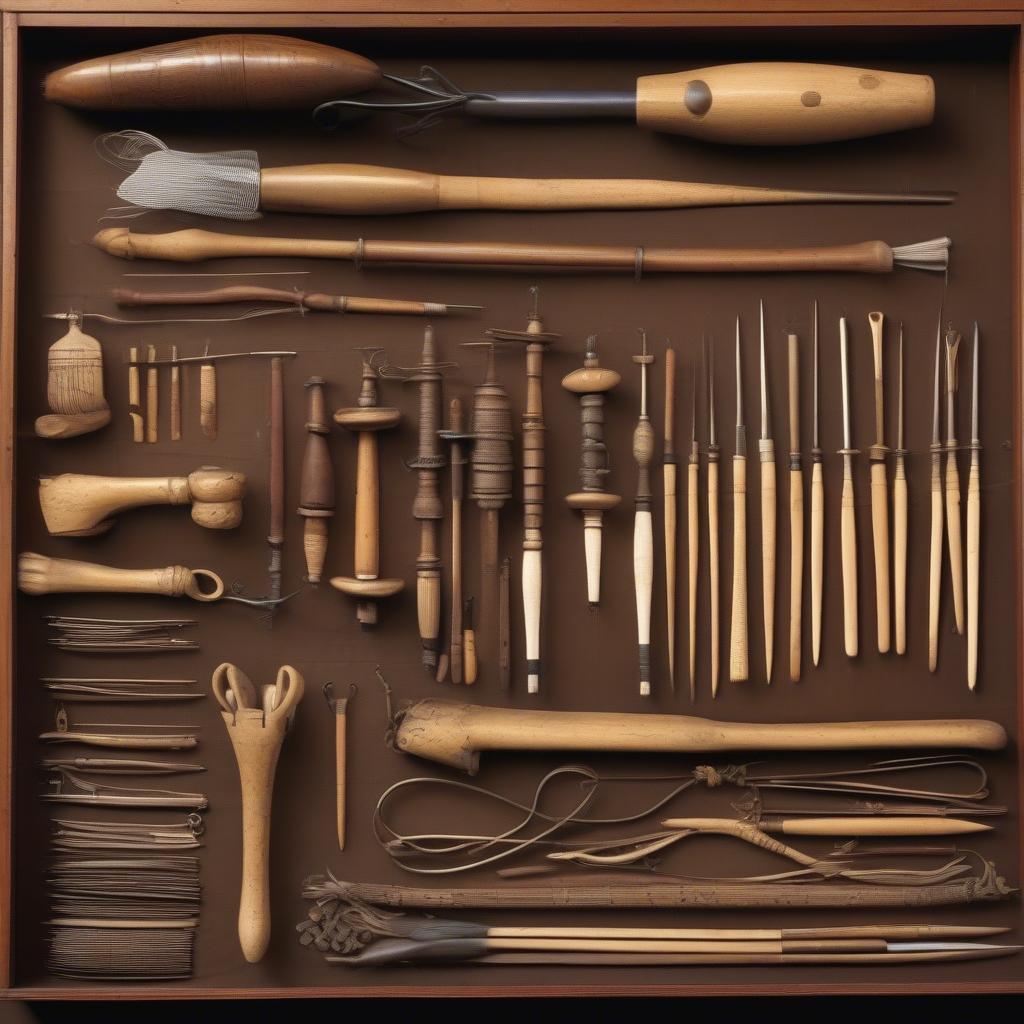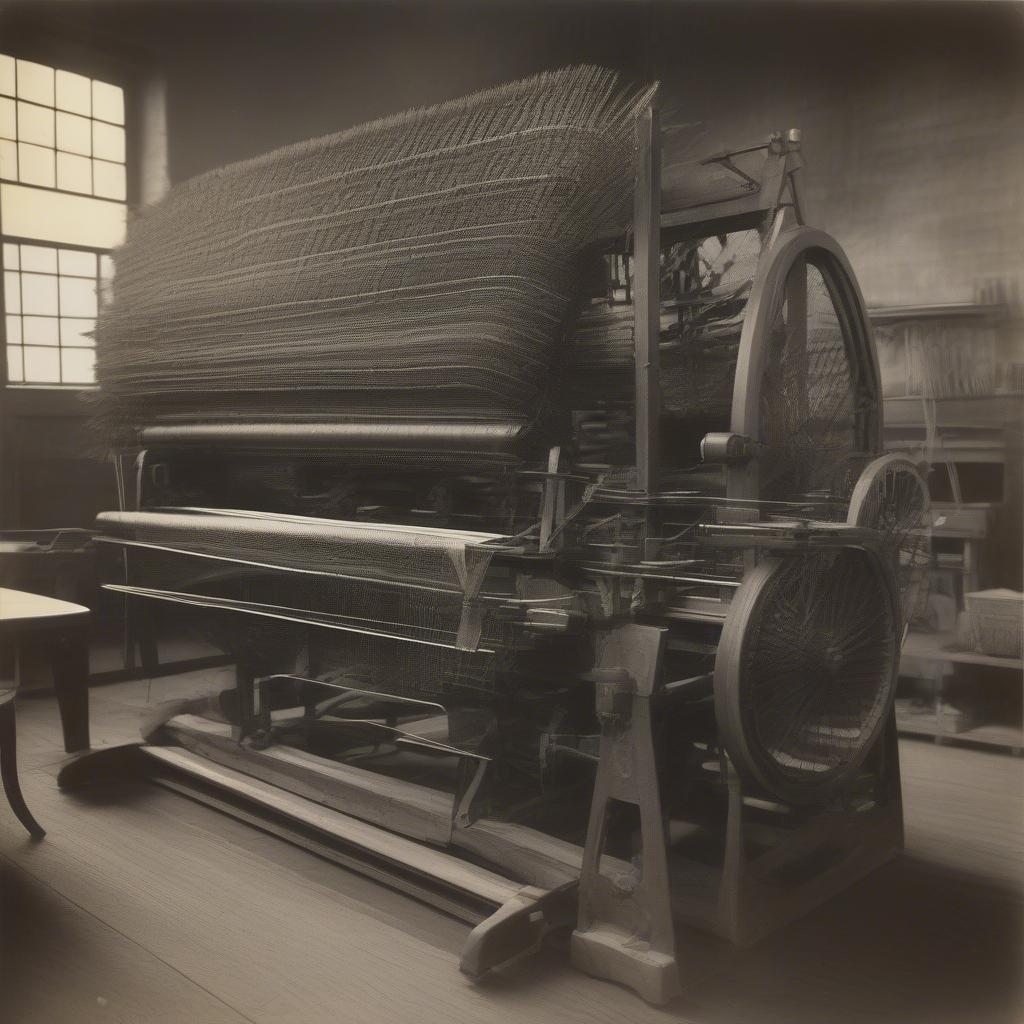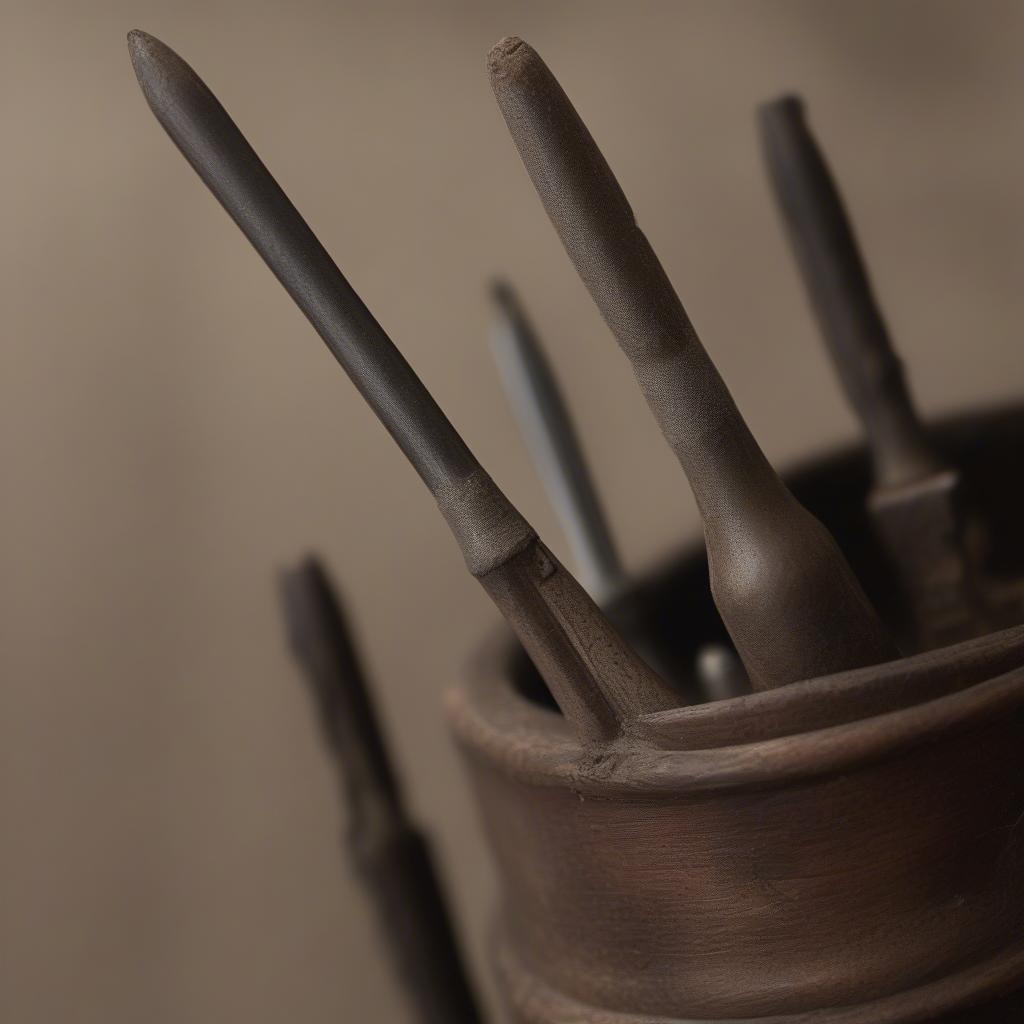Basket Weaving
Unearthing the Past: A Guide to Old Basket Weaving Tools
Old Basket Weaving Tools offer a fascinating glimpse into the rich history of this ancient craft. From simple hand-held devices to more complex machinery, these tools have shaped the evolution of basketry for centuries. Understanding their purpose and significance allows us to appreciate the artistry and skill involved in creating beautiful and functional woven pieces. Let’s delve into the world of these essential tools and explore their unique contributions to the craft.  Collection of antique basket weaving tools showcasing various types and materials
Collection of antique basket weaving tools showcasing various types and materials
Essential Old Basket Weaving Tools: From Bodkins to Beaters
Several tools have played a pivotal role in the creation of baskets throughout history. These tools, often crafted from readily available materials like bone, wood, and metal, are testament to the ingenuity and resourcefulness of basket makers.
Bodkins and Awls: Piercing and Weaving Precision
Bodkins and awls were essential for creating holes and navigating the weave. Bodkins, typically made of bone or wood, were used to open up spaces between woven materials, allowing for the smooth insertion of new strands. Awls, with their sharp points, were perfect for piercing tough materials and creating starting points for the weave.
Splitters and Gauges: Ensuring Uniformity and Consistency
Splitters and gauges helped maintain consistency in the width and thickness of weaving materials. Splitters were used to divide larger pieces of reed or wood into smaller, more manageable strips. Gauges ensured uniformity in the width of these strips, contributing to the overall neatness and strength of the finished basket.
Beaters and Combs: Achieving Tightness and Texture
Beaters and combs were crucial for achieving a tight and even weave. Beaters, often made of wood, were used to compact the woven rows, creating a sturdy and durable structure. Combs, with their multiple teeth, helped align and straighten the weaving materials, ensuring a uniform texture and appearance.
If you’re looking to try your hand at basket weaving, even with modern materials, check out our guide on basket weaving with yarn.
The Evolution of Basket Weaving Tools
Over time, basket weaving tools evolved alongside the craft itself. Early tools were primarily hand-held and crafted from natural materials. As technology advanced, new materials like metal and specialized tools were introduced, improving efficiency and expanding the possibilities of basketry.
The Impact of Industrialization on Basket Making
The Industrial Revolution brought about significant changes in basket weaving tools. Machines were developed to automate certain processes, such as splitting and weaving, leading to increased production and the availability of more complex basket designs.  Vintage basket weaving machine demonstrating early industrialization of the craft
Vintage basket weaving machine demonstrating early industrialization of the craft
Modern Adaptations of Traditional Tools
While modern technology has transformed certain aspects of basket weaving, many traditional tools remain relevant today. Craftspeople continue to appreciate the tactile connection and control offered by hand-held tools, valuing the unique character and quality they impart to their creations. You can even explore the world of cedar bark basket weaving for a traditional experience.
“The tools of the past hold valuable lessons for modern basket makers,” says renowned basketry artist, Eliza Cartwright. “They remind us of the foundations of the craft and the importance of precision and patience in creating beautiful, enduring pieces.”
Exploring the Significance of Old Basket Weaving Tools
Old basket weaving tools are more than just instruments for creating baskets; they are artifacts of cultural heritage, reflecting the ingenuity and resourcefulness of past generations.
Tools as Cultural Markers
Basket weaving tools often reflect the specific materials and techniques used by different cultures. The design and construction of these tools can provide valuable insights into the traditions and practices of particular communities and their relationship with the natural world.
Preserving the Legacy of Basketry
Studying and preserving old basket weaving tools is crucial for understanding the evolution of the craft and its cultural significance. Museums and historical societies play a vital role in safeguarding these artifacts, ensuring that future generations can appreciate the rich history and artistry of basketry. Interested in learning more? Consider joining a basket weaving retreat.
“Old basket weaving tools tell a story,” explains museum curator, Dr. James Weaver. “They speak to the creativity and adaptability of human beings and their ability to transform simple materials into objects of beauty and utility.”
 Close-up view of a well-worn awl, highlighting its historical use
Close-up view of a well-worn awl, highlighting its historical use
Conclusion
Old basket weaving tools offer a window into the past, providing valuable insights into the history, techniques, and cultural significance of basketry. From simple bodkins to complex weaving machines, these tools have shaped the craft and continue to inspire contemporary basket makers. By understanding and appreciating these tools, we can gain a deeper appreciation for the artistry and enduring legacy of basket weaving. For those starting out, our guide on weave a basket craft kids can be a great starting point. And if you’re looking for a more in-depth resource, check out great book of basket weaving armed dangerous.
Need assistance? Contact our 24/7 customer support at +84 388 951 999 or visit our offices in Hanoi, Vietnam, or Tech Avenue, Suite 12, San Francisco, CA 94105, USA.
